
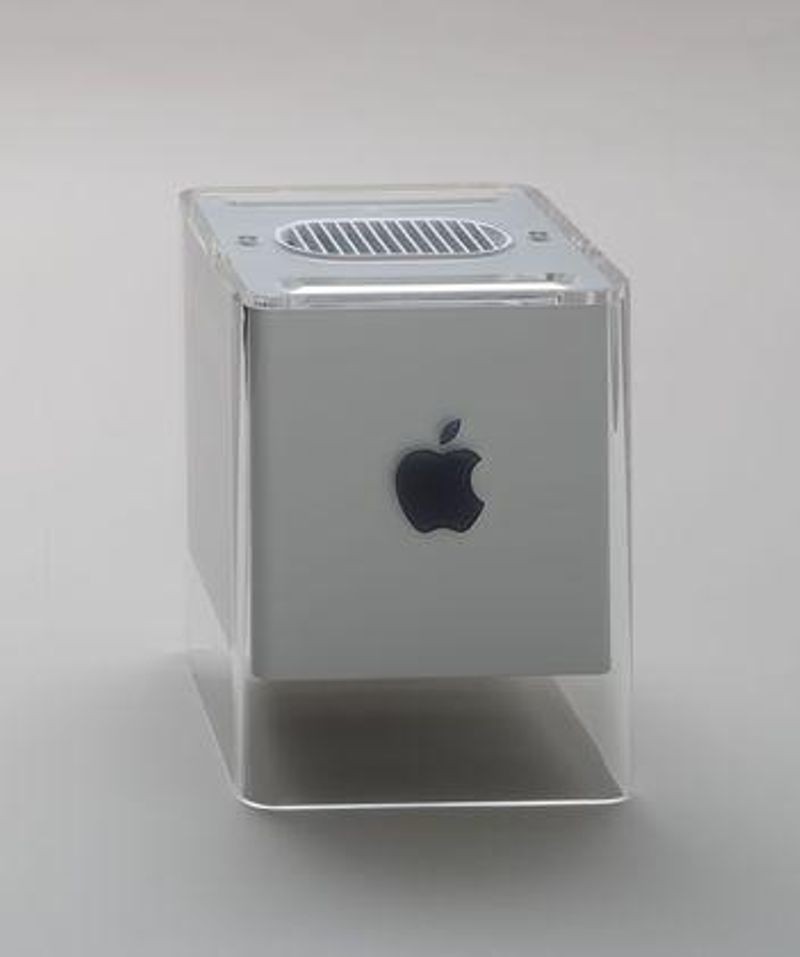
Macintosh G4 Cube in the collection of the Museum of Modern Art, New York
The introduction of the Macintosh was probably the largest computer announcement in American business history. It wasn’t merely an event for the technology crowd, it was also a major cultural touchstone. Covered by every branch of media, the Macintosh was Apple’s biggest product to date, introducing the graphical user interface (GUI) and desktop metaphor to the general public and in the process showing a new way of interacting with computers. It would quickly become one of the defining artifacts of the 1980s.
The Macintosh crossed over into many different arenas. The Museum of Modern Art in New York has added several Macs to their collection as examples of excellence in 20th century design, including the Mac G4 Cube. Macintosh cases have been used as planters and aquariums. Apple commercials have often gone beyond being simple advertisements for their products and become media events, starting with a famous 1984 commercial directed by Ridley Scott shown at the American football Super Bowl.
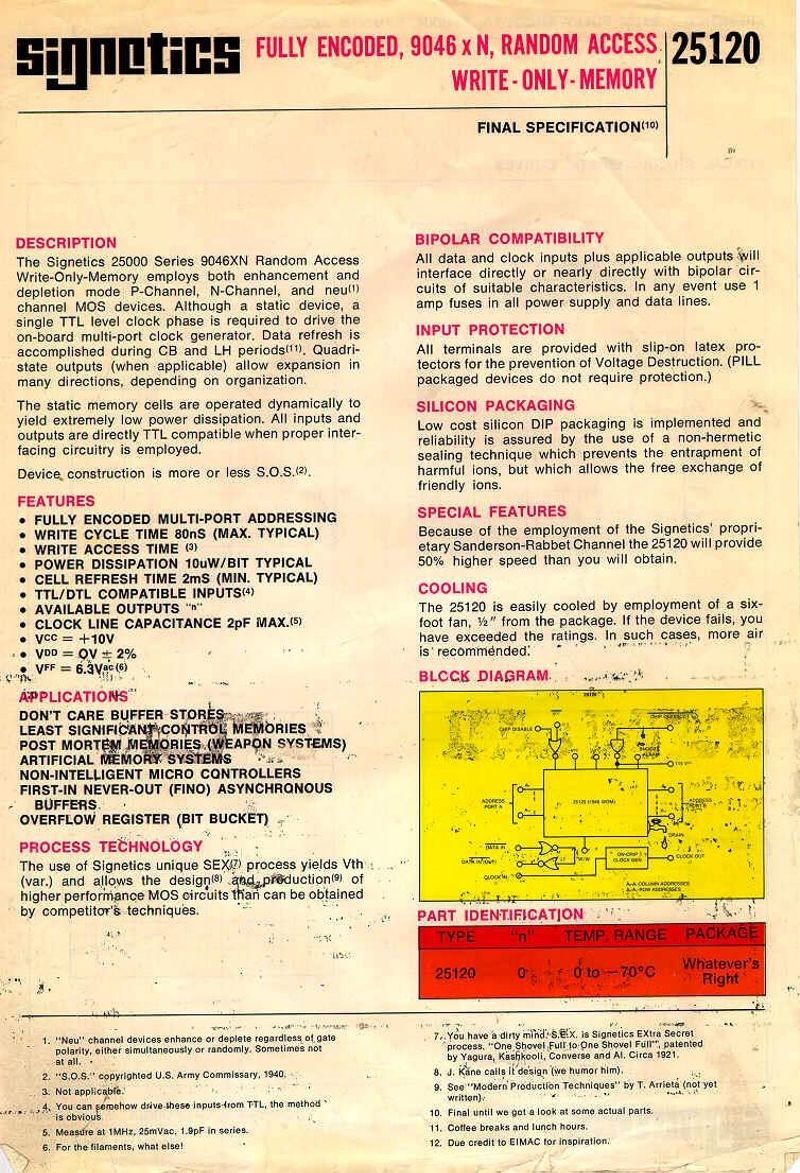
Signetics 25120 Write Only Memory Datasheet
The truest sign of anything becoming a part of everyday culture is when it has been picked up by the world of comedy. Computers have been used in comedy programs dating back to the 1950s, in both film and television. Comedians aren’t the only ones poking fun at computers. Engineers also like to play jokes. One famous (though nerdy) example was a product datasheet for an imaginary computer memory called a “Write Only Memory.” The document looked like it was describing a real product but its main feature was that you could only store data on it—you could never retrieve the data back from it. The imaginary chip, the “Signetics 25120,” also had some interesting cooling requirements: “The 25120 is easily cooled by the employment of a six foot fan placed half an inch from the package. If the device fails, you have exceeded the ratings. In such cases, more air is recommended.”
Advertising had latched on to the comedy idea in the personal computing age, with John Cleese doing a series of hilarious ads for Compaq.
Perhaps no other program of the last forty years has better told us what’s hip and culturally significant through comedy than has Saturday Night Live (SNL). Over the years, the Macintosh and various Apple products have provided plenty of comedy bits for SNL, starting with the McIntosh Jr., which promised its young user would have “the power to CRUSH the other kids,” a riff on the range of ads that Apple was running for the Macintosh at the time. Another was the McIntosh Post-It Note, which played on the concept of the paperless office at the same time as making fun of the Newton line of PDAs.
Released at the same time as the Macintosh was a fictional computer that was 32-bits and offered a staggering 450KB of memory! It proudly declared that it “Computes! Sorts! Prints! Draws! Figures! Doodles! Slices! Dices! Whistle! Whimpers! Dances! Prances!” It was the most insanely great great computer ever devised for a comic strip.
It was the Banana Junior 9000 computer!
From 1980 to 1989, Berkeley Breathed produced the comic strip Bloom County for the Washington Post Writers Group. Dealing with a group centered around the Bloom family boarding house, Bloom County looked at a large variety of events in popular culture, forming a record of the decade through the slightly surreal activities of characters such as Opus the Penguin, Bill the Cat, Steve Dallas, and the heavy metal band Deathtöngue.
The strip featured a young, talented gentleman named Oliver Wendell Jones. Oliver was a schoolmate of young Milo Bloom, and knew his way around a computer. So talented was young Mr. Jones that he once managed to hack into the Soviet newspaper Pravda and change a headline in an attempt to end the Cold War. Oliver has a long criminal record from his escapades.
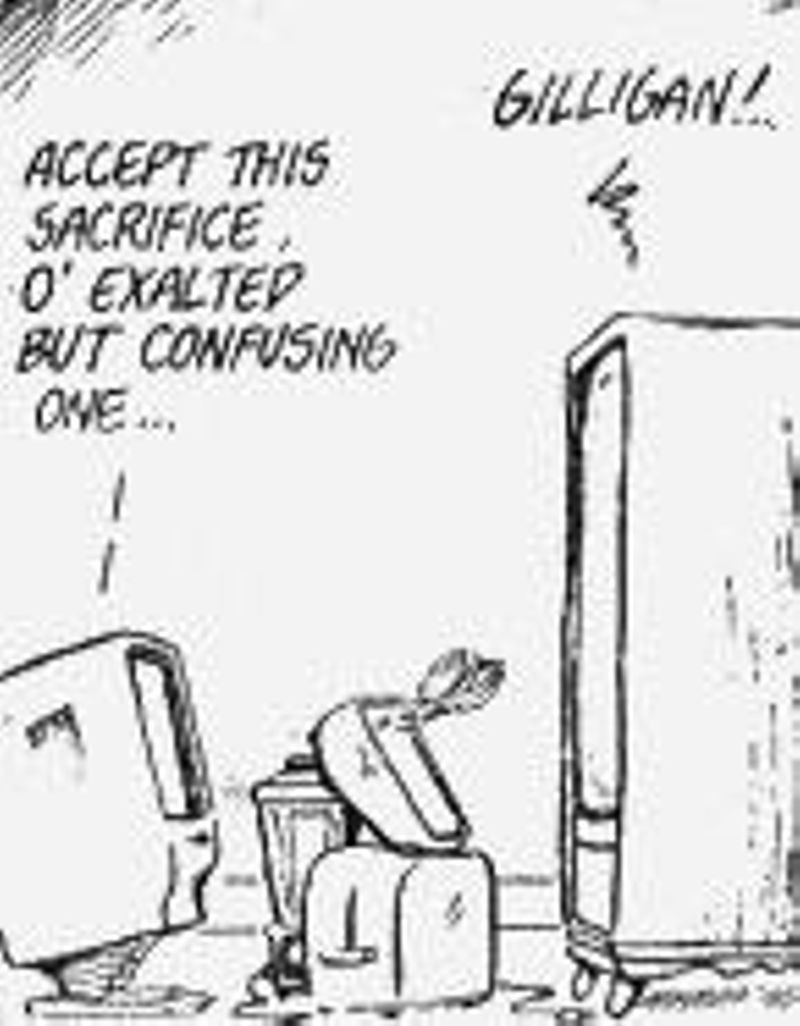
The Banana Junior makes his offerings.
In late 1984, Breathed introduced a new character, the Banana Junior 9000 (later the Banana Junior 6000, though it is unknown whether this was due to an unseen processor downgrade…) which was adopted by young Oliver Wendell Jones. The computer looked strangely similar to the Macintosh, introduced earlier that year, though unlike the Mac, it had a pair of feet and regularly walked around the Jones residence. In fact, so advanced was the Banana Junior that it often walked into the living room where it would worship the television as its God, leaving household appliances as offerings to appease it.
In a particularly memorable Sunday edition, Bloom County ran a fake ad for the Banana Junior, pointing out, rightly, that KISS bassist Gene Simmons never had a personal computer while he was growing up, and any child who doesn’t get a Banana Junior “will very probably grow up to be a bass player in a heavy-metal rock band who wears women’s fishnet pantyhose and sticks his tongue down to his kneecaps. Just like Gene Simmons.” The ad also mentions the suite of software available for the Banana Junior, including Bananawrite, Bananadraw, Bananafile, and Bananamanager.
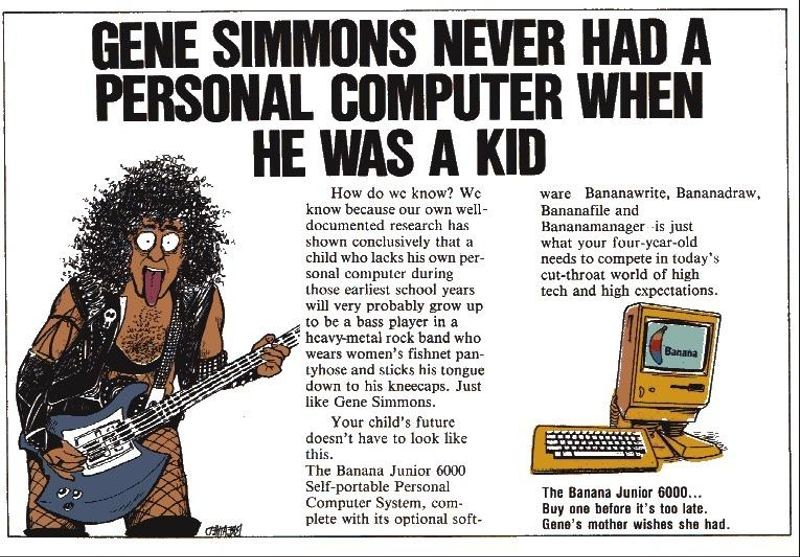
The Banana Junior 600 ad from 1984.
The fictional Banana Computer Company, clearly modeled on Apple of course, went bankrupt after having sold only two Banana Juniors. After massive losses, the Chairman of Banana Computer jumped out of his 63rd floor window, the words ‘Capitalism Sucks!” painted on his chest.
Oliver determined that the Banana Junior was obsolete less than a year later (after having been twice confiscated by the FBI for Wendell’s pranking) and would eventually end up in one of Bill the Cat’s yard sales. An ignominious end for a sentient computer!
One thing that has happened time and time again with fictional devices is the attempt to create them in the real world! So it is with the Banana Junior. John Leake created an actual working Banana Junior! While it’s not sentient (or if it is, it’s keeping it to itself), visually it’s a dead ringer for Breathed’s fictional computer, right down to the adorable little feet. John even created the BananOS operating system, as well as a Banana Computer Company branded mouse! This is as close as it is possible to get to creating an actual Banana Junior!
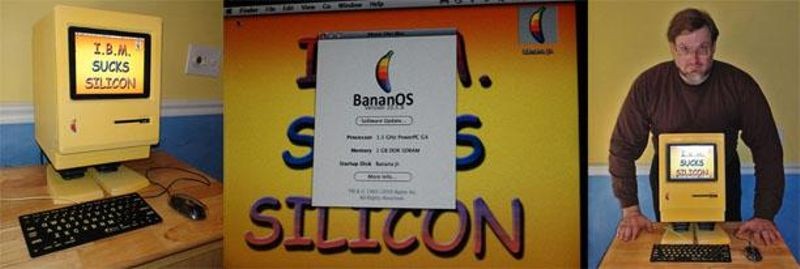
Left: The Banana Junior exposes its thoughts on the competition; Center: a Screenshot of BananOS; Right – The Banana Junior and it’s Maker – John Leake. Photos courtesy John Leake
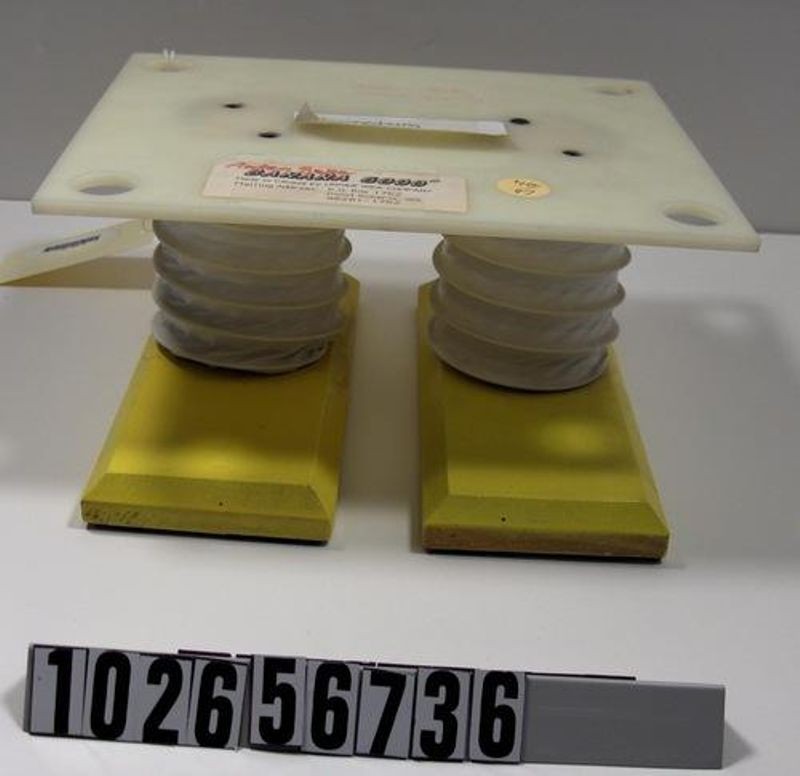
Banana 6000 Macintosh stand, Unique Idea Company, Canada, 1985
In the collection of the Computer History Museum, there’s an artifact related to the Banana Junior. In 1985, Canada’s Unique Idea Company released a stand for the Macintosh 128 in the shape of the Banana Junior 6000′s feet. When a Mac is placed on it, it’s pretty close to the image from Bloom County… and it’s less likely to get mouthy with ya!